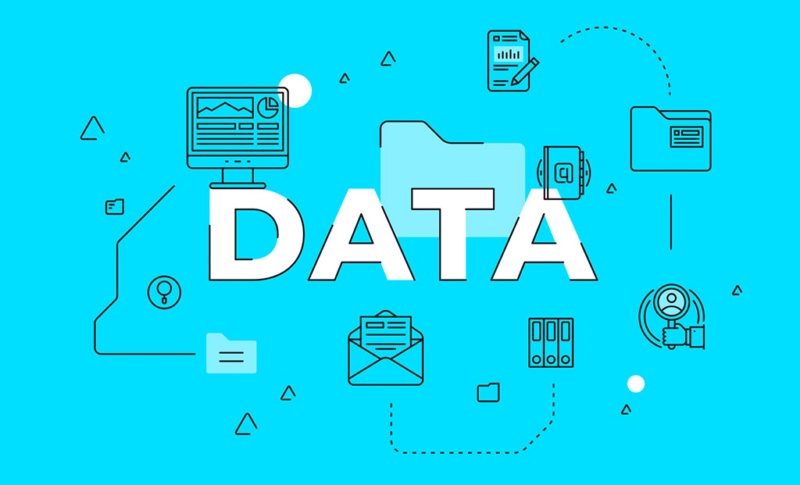A data classification matrix is a systematic approach to categorizing and labeling data based on its level of sensitivity, confidentiality, and importance. This matrix is crucial for any organization dealing with large volumes of data, ensuring that each piece of information is handled appropriately. The categorization usually ranges from public or non-sensitive data to highly confidential and critical data. Implementing a data classification matrix not only enhances data security but also streamlines data handling, making it easier for organizations to comply with legal and regulatory requirements. It’s about putting the right data in the right place, under the right protection.
Rational Enterprise: Streamlining Your Data Classification Process
In data classification and governance, Rational Enterprise has deep experience. Our expertise lies in creating tailored solutions designed to fit the unique needs of each organization and automate the application of a data classification matrix. We understand the complexities and challenges of managing diverse data sets in today’s business environment. By leveraging our advanced proprietary software tools, and our comprehensive professional services, we empower organizations to classify, manage, and protect their data effectively. Rational Enterprise makes sure that your data classification matrix is not just a concept, but a practical, efficient tool integrated into your daily operations.
Defining a Data Classification Matrix
A data classification matrix is a pivotal tool in information governance, providing organizations with a structured framework to categorize and manage their data effectively. This matrix is a strategic instrument that helps organizations make informed decisions about how their data should be handled, protected, and shared. At its core, a data classification matrix sorts data based on its sensitivity and significance, ensuring that the appropriate security measures are applied. With the ever-expanding volume of data, having a clear understanding of data classification is crucial for businesses aiming to navigate the complexities of data governance successfully.
The Importance of Data Classification in Modern Organizations
As businesses generate copious amounts of data daily, ranging from mundane to highly confidential information, the lack of proper data classification can lead to severe consequences. With a well-defined data classification strategy, organizations can avoid data breaches, compliance violations, and damage to their reputation. Data classification empowers organizations to make well-informed decisions about how to safeguard and utilize their data assets. By categorizing data into distinct levels, such as public, internal, confidential, and restricted, organizations can tailor their security measures and access controls to match the specific requirements of each category. This approach enhances data security and ensures data is handled according to regulatory requirements and internal policies.
Key Components of a Data Classification Matrix
Firstly, data categories form the foundation, defining different levels of data sensitivity, such as public, internal, confidential, and restricted. Data owners play a pivotal role by taking ownership of specific data categories, determining their classifications, and ensuring the enforcement of security measures. Access controls dictate who can access each category of data and the extent of their access, aligning with the data’s classification.
Encryption and security measures are tailored to the unique requirements of each data category, with stricter protocols for highly confidential data. Retention policies govern how long data should be retained, taking into account regulatory mandates and business needs. Lastly, monitoring and auditing processes continuously evaluate data handling, enforcing adherence to the matrix, and promptly identifying and rectifying vulnerabilities. Collectively, these key components enable organizations to safeguard their data, mitigate risks, and ensure compliance with data protection regulations.
Steps to Creating a Data Classification Matrix for Your Organization
Identify Data Categories: Begin by identifying the distinct categories you are going to use. Common categories include public, internal, confidential, and restricted. Make sure that these categories align with your organization’s specific data types and business requirements.
Assign Data Owners: Designate data owners for different areas of the business. Data owners are responsible for determining the classification of data within their purview, delegating classifications when appropriate, and ensuring that the proper security measures are in place. These individuals or departments play a pivotal role in the data classification process.
Define Access Controls: Clearly define who has access to each category of data and specify the level of access they should have. Access controls should be tailored to the data’s classification, ensuring that only authorized personnel can access classified information.
Specify Encryption and Security Measures: Determine the encryption and security measures required for each data category. Highly confidential information may demand stronger encryption and more rigorous security protocols. Make sure that these measures align with industry standards and regulatory requirements.
Establish Retention Policies: Create data retention policies that outline how long data within each category should be retained. You will likely need to create additional categories for this purpose than the basic four, but organizations should strive to create as few retention categories as possible, opting instead for a ‘big bucket’ approach. The data retention policies that define the retention categories and how long each record should be kept should consider both compliance mandates and your organization’s unique business needs. Clear retention guidelines prevent data from being retained unnecessarily and ensure compliance with data protection regulations.
Elevate Your Data Governance with Rational Enterprise
Looking to enhance your organization’s data governance and security? Rational Enterprise is your partner in developing a robust data classification matrix. We offer a blend of innovative software and expert services to streamline your data governance process. Our solutions are designed to provide clarity and control over your data, aligning with your specific business needs. Embrace the power of effective data classification with Rational Enterprise and unlock the potential of your data. Contact us today to start building a stronger, more secure data foundation for your organization.




